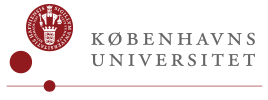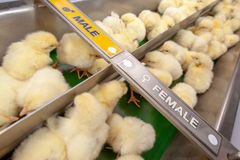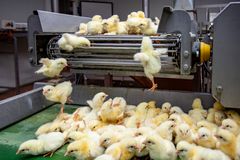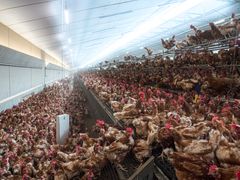Researcher: Seven billion newly hatched chicks are killed every year – but a ban is not the solution
Annually, the global egg industry kills seven billion day-old male chicks because they don’t lay eggs and aren’t worth raising for meat. While several countries have banned the practice, neither bans nor other current solutions are sustainable, says a researcher at the University of Copenhagen.
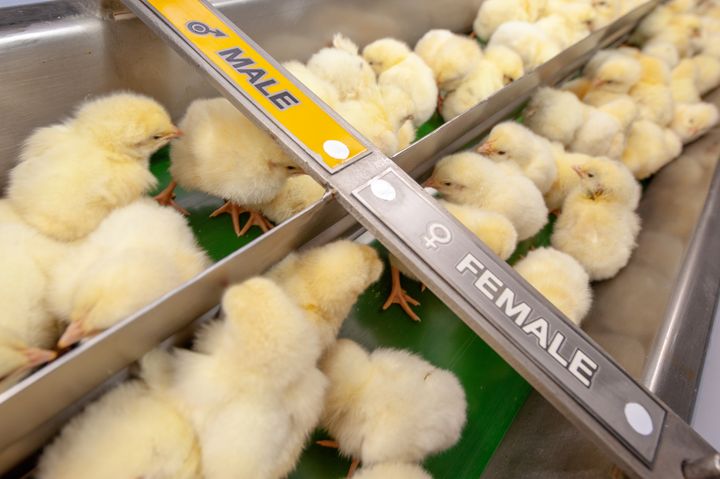
With Easter just around the corner, we are surrounded by a ubiquity of eggs and adorable yellow chicks that symbolize life and resurrection. In stark contrast is the fact that around seven billion male layer chicks, are shredded or gassed alive by the egg industry every year, just hours after they hatch. Male chicks of course cannot lay eggs, and they are furthermore not worth fattening up like broilers, due to decades of specialized breeding toward either egg laying or meat production - but not both.
Calculations show that it costs one dollar to kill each chick – an annual cost of approximately seven billion dollars, and thus this also constitutes a significant expense for the industry.
"While the ethical aspect of systematically killing so many animals is obvious to many of us, the ways we currently try to solve the problem are also problematic from a wider perspective," says Rebecca Rutt, an associate professor at the Department of Food and Resource Economics who researches industrial animal production.
In the wake of pressure from animal rights organisations, a few countries have now banned chick culling, including Germany, Austria and France. In Denmark, where the practice remains legal, more than three million day-old male layer chicks are culled every year – including those from free-range and organic production systems. But according to Rebecca Rutt, the imposition of bans is not a real solution:
"In countries where killing has been made illegal, male chicks are often exported. They end up in places where they are kept alive as cheaply as possible and often under poor conditions, just long enough for them to be legally slaughtered, at which point they are often used to make products like pet food. So from an animal welfare perspective, the bans are no solution," says Rutt, who, together with research colleague Jostein Jakobsen from the University of Oslo, studied the ongoing and emerging alternatives to chick culling coming from the biotech sector.
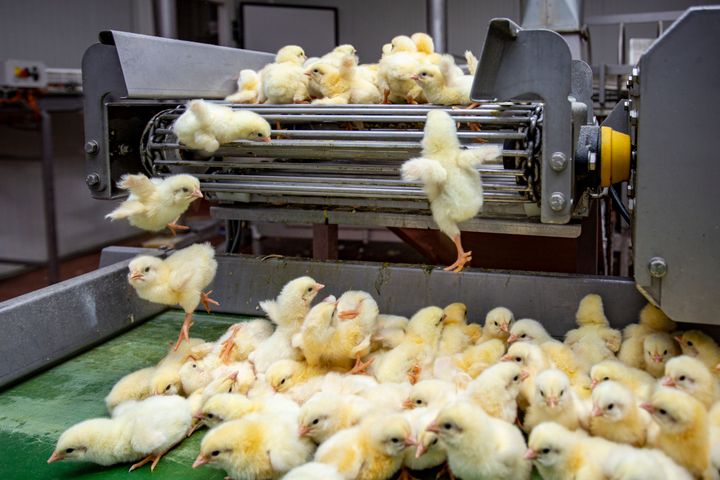
Patch-up solutions?
Many animal welfare organizations point out that a better solution would be to avoid having male layer chicks born in the first place. In response, biotech companies in several countries are vying to develop technologies for this purpose, and in some cases even being publicly subsidized to do so. The technologies include several methods to determine an embryo’s sex so males can be destroyed prior to incubation and hatching - ideally as early as possible. One at least is even attempting to alter the sex of chicks through environmental stimuli, utilizing birds’ natural genetic plasticity.
"The technological solutions are presented as a multi-win, because the industry actors may save money on incubation and human labor costs, there’s less energy expended, and, of course, the lives of the newborn chicks are spared. Taken on its own, this seems like a good solution. But at the same time, such ‘solutions’ also serve to uphold an industry that is riddled with ethical problems for those chickens that live" says Rebecca Rutt.
These include the widespread keel bone fractures in egg laying hens, pecking and cannibalism among stressed chickens that lack space and sunlight and/or that are kept in flock sizes too large to allow them to establish a natural hierarchy, not to mention the ‘turbo’ chickens which fatten so quickly that their organs and legs cannot bear their own body weight.
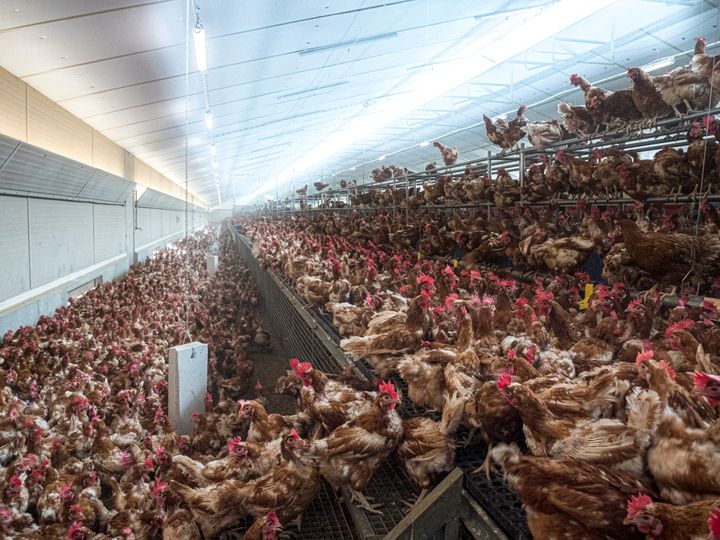
Chickens that can do both
According the researcher, resolving dilemmas in the industry and our food system require that it is approached as a whole:
"Chick culling can be seen as an expression of an industry driven by efficiency logics due to intense competition. Combined with decades of intensified breeding, the system has rendered male ‘layers’ effectively worthless" says Rutt.
This breeding has roots especially in the 1950s in the United States. Here, chickens began to be aggressively bred so that some would lay as many and as large eggs as possible, while others would gain as much weight as possible in the shortest time. This has resulted in hens that currently lay around 300 eggs a year but are not very meaty, and broilers that put on two kilos in just 35 days.
“My own and colleagues’ research has found that quite a few farmers would like to produce differently, such as at a smaller scale including a slower pace, to allow better living conditions, and perhaps return to the ‘heritage’ or ‘dual purpose’ breeds of the past that provided both eggs and eventually meat - though at much smaller quantities. Yet most today wouldn’t survive economically. So such shifts would require more fundamental changes that must be driven by legislation, which typically follows from public pressure,” says Rutt.
She concludes:
“Shedding more light on practices like male chick culling, and putting current ‘solutions’ into the wider perspective, is an important part of informing this process.”
A GROWING INDUSTRY
- It is estimated that approximately seven billion day-old male layer chicks are killed annually around the world.
- The killing of male layer chicks occurs in all types of egg production – including among free-range and organic hens.
- The global poultry industry, in which chicken dominates, had an estimated market capitalization of $322.55 billion in 2021. The sector is expected to grow year on year.
- According to the UN Food and Agriculture Organization (FAO), poultry accounted for 40% of total meat production in 2020, while global egg production topped 1,600 billion. Egg production has more than doubled since 1990 and continues to grow (source: Production of eggs worldwide 2022 | Statista).
Keywords
Contacts
Rebecca Rutt
Associate Professor
Department of Food and Resource Economics
University of Copenhagen
+45 50 27 75 76
cso@ifro.ku.dk
Maria Hornbek
Journalist
Faculty of Science
University of Copenhagen
+45 22 95 42 83
maho@science.ku.dk
Images
Links
ABOUT THE FACULTY OF SCIENCE
The Faculty of Science at the University of Copenhagen – or SCIENCE – is Denmark's largest science research and education institution.
The Faculty's most important task is to contribute to solving the major challenges facing the rapidly changing world with increased pressure on, among other things, natural resources and significant climate change, both nationally and globally.
Subscribe to releases from Københavns Universitet - Det Natur- og Biovidenskabelige Fakultet
Subscribe to all the latest releases from Københavns Universitet - Det Natur- og Biovidenskabelige Fakultet by registering your e-mail address below. You can unsubscribe at any time.
Latest releases from Københavns Universitet - Det Natur- og Biovidenskabelige Fakultet
Vi skal være flexitarer: Skidtfisk og rogn kan gøre grønsagerne mindre kedelige26.4.2024 10:01:42 CEST | Pressemeddelelse
Svaret på en grøn omstilling af vores kostvaner er ikke, at vi alle skal være vegetarer. En sund og mere realistisk løsning er derimod flexitar-kost, hvor det animalske kommer fra havet og giver umami-smag til de ’kedelige’ grøntsager. Sådan lyder det fra gastrofysikeren Ole G. Mouritsen fra Københavns Universitet, som viser, hvordan man med en matematisk ligning kan udregne umami-potentialet i alt fra rogn og rejepasta til blåmuslinger og blæksputter.
Superradiant atoms could push the boundaries of how precisely time can be measured22.4.2024 14:22:28 CEST | Pressemeddelelse
Superradiant atoms can help us measure time more precisely than ever. In a new study, researchers from the University of Copenhagen present a new method for measuring the time interval, the second, mitigating some of the limitations that today’s most advanced atomic clocks encounter. The result could have broad implications in areas such as space travel, volcanic eruptions and GPS systems.
Super-lysende atomer kan skubbe grænsen for hvor præcist vi kan måle tiden22.4.2024 14:07:32 CEST | Pressemeddelelse
Superstrålende atomer kan hjælpe os med at måle tiden mere præcist, end vi kan i dag. I et nyt studie fremlægger forskere fra Københavns Universitet nemlig en ny metode til at måle sekundet, som kommer uden om det problem, som selv de mest avancerede atomure i dag døjer med. Resultatet kan få betydning for så forskellige ting som rumfart, vulkanudbrud og vores GPS-systemer.
Verdens tundra udleder overraskende mere CO2, når det bliver varmere17.4.2024 17:00:00 CEST | Pressemeddelelse
KLAUSULERET TIL DEN 17. APRIL KL. 17:00 Når det bliver varmere, vil den arktiske tundrajord formentlig frigive 30% mere CO2, end den gør i dag. Og det er næsten fire gange mere, end hvad man tidligere har estimeret. Det viser et stort internationalt studie, som forskere fra Københavns Universitet har bidraget til, og som netop er offentliggjort i tidsskriftet Nature.
Internet can achieve quantum speed with light saved as sound15.4.2024 11:16:35 CEST | Press release
Researchers at the University of Copenhagen’s Niels Bohr Institute have developed a new way to create quantum memory: A small drum can store data sent with light in its sonic vibrations, and then forward the data with new light sources when needed again. The results demonstrate that mechanical memory for quantum data could be the strategy that paves the way for an ultra-secure internet with incredible speeds.
In our pressroom you can read all our latest releases, find our press contacts, images, documents and other relevant information about us.
Visit our pressroom